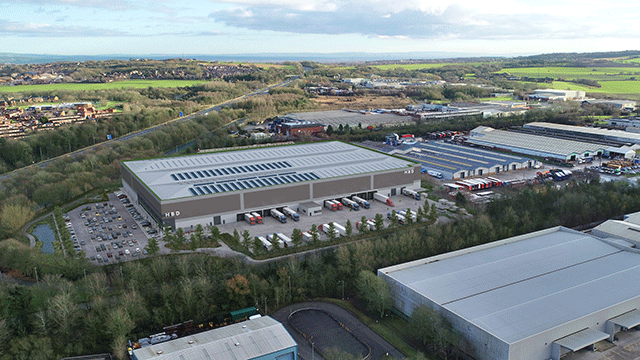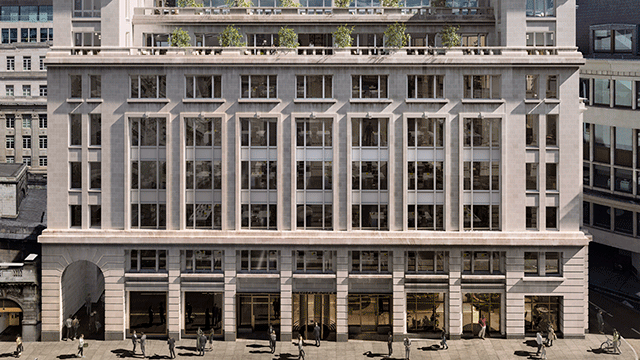As planning policy moves to limit suburban sprawl, Cheryl Freedman takes a look at urban villages.
At one time Bordesley in Birmingham’s Heartlands was run-down, dilapidated, and not the sort of place where you would want to bring up your children. Until the late 1980s there had been no investment in the region – now a fully assisted development area – for 50 years. But times change.
Two months ago Environment Secretary John Gummer officially opened the centre of Bordesley, the first new purpose-built urban village in the country. The event marked an eight-year partnership between public and private sectors, with £65m being invested in the village, a mile north-east of Birmingham city centre.
No man’s land
“It has gone from a forgotten, no man’s land into a thriving urban village. What was an area of dereliction and neglect has now got lots of people living in it, playing in it and soon to be shopping in it,” says Jim Beeston, chief executive of Birmingham Heartlands Development Corporation. “Ten years ago people said we could never have a successful scheme here, but masses of houses have been sold.”
The blueprint for Bordesley was spawned in 1988, with the aim of building hundreds of homes in a self-contained residential area, creating new jobs and a thriving village centre, while improving health, retail and community facilities. Rather than simply a housing development, a crucial part of Bordesley’s evolution was the creation of its newly opened village centre, complete with four shops, doctor’s and dental surgery, village hall, plus refurbished public house to the tune of £2.9m. Originally developed by Birmingham Heartlands Development Corporation and Birmingham city council with Wimpey Homes, the Bournville Village Trust has now bought this centre.
There are about a thousand homes in Bordesley for sale or rent, 750 of these new, from developers such as Bryant, Tarmac, Wimpey Homes, Woolwich Homes, Bellway Urban Renewal and Focus Housing Association. Security has been improved, along with parking and landscaping. Many residents, claims Beeston, have come from within a 3-mile radius of Bordesley to live in the village. Meanwhile, the Grade II listed former Garrison Lane school has been converted into 23 work space units for new businesses, creating up to 50 local jobs.
Driving force
Are there any lessons to be learnt by those areas suffering problems similar to Bordesley – for instance, high unemployment and large expanses of post-war public housing? Beeston says that the solutions required are specific to an area’s needs, but concedes that “getting the private sector involved early on, having a good mix of different elements, and having a master plan of what you intend to do,” all help. In his opinion, a driving force such as BHDC is vital in making headway with what may often look like a hopeless cause: “Sometimes the potential of an area is hard to see when all that is visible is rubbish everywhere, chewed-up land and useless bits of road.”
Bordesley highlights a trend towards looking back to city centres to exploit and nurture existing assets rather than greenfield sites. In Newcastle’s historic Grainger Town area, which dates back to the 1830s, the master plan has yet to take full shape. The area, fallen into decline in many parts, qualifies for £1.5m SRB money as well as ERDF Objective 2 funding. Some 157,930m2 (1.7m sq ft) is due to be redeveloped jointly by the private and public sectors, creating up to 7,000 residential units over a six-year period. Most of the homes will be above shops in multi-storey buildings in Grey Street, Grainger Street and Clayton Street. “There is a lot of vacant space above shops, which is a problem not just in Newcastle but in nearly every other town in the country,” says Peter Howe, development officer for Grainger Town at Newcastle city council.
A more detailed strategy is being drawn up for the 29.1ha (72 acre) site. “The aim,” continues Howe, “is to have not just a place in which to shop but a place to live in and spend recreational time. We’re going to have a concerted bash at making these conversions – not just one or two. We are going to have a real crack at it.”
Neil Osborne of Newcastle agent Storey Sons & Parker is marketing buildings with consent for residential conversions in Grainger Street and Highbridge. With the 1980s no more than a distant memory, he describes the conversion of office accommodation into flats as “inevitable”. “I think it’s a good thing [to be] driving people back into the city centre. A lot of vibrant European cities have people living in the centre,” he adds.
London’s biggest regeneration project of the last decade, Docklands, still has residential projects emerging. Work has now started on a new urban village, Silvertown, on the site of the former Royal Docks in E16 – one of the last social housing sites to be developed as part of the LDDC’s regneration programme. Hunting Gate has been awarded two contracts worth £13.5m to build 230 homes for the Peabody Trust and the East Thames Housing Association.
Elsewhere in London, other run-down areas are again attracting residents, some without the boost of public money. In 1994, Bee Bee Developments paid Sutton Hospital £7.5m for a 3.2ha (8 acre) site housing 83,610m2 (900,000 sq ft) of buildings on Clerkenwell Estate. Dallington Street, Great Sutton Street and Northburgh Street have already seen residential refurbishment. Commercial tenants are still in occupation at some of the 49 buildings on the estate, but as these become available Bee Bee sells on to residential companies for conversion.
One such company is Sky Properties, which has converted a 1,579m2 (17,000 sq ft) former Victorian warehouse on Northburgh Street into 12 flats. Eight of the flats have been sold and two are under offer. Units are being fitted out and work finishes in September. Meanwhile, Sky recently purchased 1-5 Dallington Street. Planning consent has been granted to convert the 2,787m2 (30,000 sq ft) into 22 flats, and work is due to start in September. Prices range from £165,000 to £225,000.
Exceeding expectations
Craig Best, director of Bee Bee, says: “The image of Clerkenwell has improved significantly in the last two years. People now believe it is an acceptable location to live.” Bee Bee’s work is also a poignant sign of the times, as demand and scope for profit changes: “Those spaces would not have been available for residential developments in the boom of the 1980s because commercial values were so high.”










